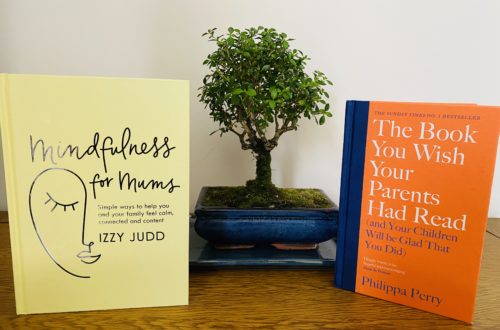
Maintaining wellbeing after therapy
A few years ago, during a prolonged and severe episode of anxiety, I was enrolled onto an online Cognitive Behavioural Therapy (CBT) programme via the NHS. After being introduced to a variety of techniques that could help me to manage my anxiety in the long-term, I was advised to put together a plan for keeping well. I thought that devising a plan to maintain my wellbeing would be incredibly useful since I was so keen to apply what I had learned from the course and I was determined to keep on expanding my knowledge of anxiety through reading self-help books that my local counsellor had recommended to me (in particular Overcoming Health Anxiety and Overcoming Worry and Generalised Anxiety Disorder).
I knew that realistically it would be so easy to forget about the tools and techniques I had learned once I was back in a routine and doing all the things that I would normally do – working, caring for my family, household chores, etc. I also realised that in order to prevent a complete relapse I would need to commit to practising CBT and relaxation exercises on a daily basis. I decided that I really needed a place where I could log all the techniques I had found to be useful, and wanted to continue to practise, and the key sources of support that I could consult whenever my level of anxiety started to increase or if a low mood crept over me.
Knowing that I can go to my plan for some tried and tested techniques that will help to alleviate my worries has provided me with much reassurance and comfort. However, the plan is not just something I ‘turn to’ during difficult periods of my life; it also packed full of simple, positive habits that I can build into my daily routine.
Read on to find out more about the steps I took to put together my wellness plan, its key features, and how I have reflected on my progress to ensure that the plan remains useful and relevant to me.
Creating a wellness plan
Your plan will be unique to you, it should contain all the techniques and sources that you have found to be helpful and calming. It can serve as reference point by documenting what has particularly worked well for you so you can then continue to do the things that serve you best. It doesn’t have to be anything too detailed, just include enough information to remind you of all the exercises and activities that you can do to help you stay well.
I created my plan in a simple Word document and started by logging all the techniques I had tried out and liked from both my CBT course and from exercises I had completed in self-help books. I then decided how I was going to structure the plan so that I could easily refer to the right techniques or sources when I needed to.
My plan contains the following sections:
Core values and wellbeing goals
This part of the plan details how I want to live my life (according to my core values) and lists the goals I am setting out to achieve, especially in relation to improving and maintaining my wellbeing. The grip of anxiety can sometimes stop me in my tracks and I can temporarily lose focus and direction so having a reminder of all the things in life that are really important to me and what I want to accomplish, can help me to reset and guide myself back on course (as well as providing me with a renewed sense of purpose).
List of triggers and main symptoms of anxiety
Identifying the different situations that can activate my anxiety and how I know when I am becoming anxious (i.e. the physical symptoms that I start to experience and my typical behaviours) allows me to quickly put in place techniques to help me to manage those difficult situations and symptoms before my anxiety gets a chance to spiral.
Techniques and strategies
This makes up the bulk of the plan and contains brief details of all the anxiety busting techniques that I have come across. I include the name of the technique and a short description on how to carry it out (just so I don’t forget!)
Some examples of the techniques that I have on my plan include:
- Mood/thought monitoring – By paying attention to and recording my thoughts and feelings each day, over a specific period of time (say 1-2 weeks), I can spot situations that trigger my anxiety and any distorted thinking patterns, and I can then start to find ways to address these factors.
- Thoughts, Feelings, Behaviour Cycle – This is a tool that I can use to write down a thought that is causing me some distress, to explore how it is making me feel and the impact it is having on my behaviour. I can then start challenging the thought by looking at my situation from different perspectives and consider other explanations. This then allows me to come up with a more balanced and compassionate thought that will not have such a negative impact on my feelings and the actions I decide to take.
- Worry Tree – Personally, I have found this to be very effective as I like the problem solving aspect involved in using this tool. I can identify a worry that I am having and then assess whether it is something that is within my control or not, if it is then I can work through a series of questions that will help me to discover actions that I can take to alleviate my concerns.
I have also put together a list of things to do instead of worrying, and that will help me to emerge from a low mood, such as:
- Activity scheduling (making sure I have tasks that I need to complete during the day)
- Reciting positive affirmations (these are usually aimed at countering any limiting beliefs that I have)
- Practising mindfulness
- Exercising regularly
- Engaging in personal development activities (such as online courses, webinars, reading self-help books etc.)
- Learning a new craft such as calligraphy, sewing, knitting, card making, colouring etc.
- Listening to my favourite ‘self-help’ podcasts
- Dancing around to uplifting music
- Relaxing with the help of some guided meditation
- Watching my favourite films or comedy series
- Having a good pamper session!
Sources of support
In case I ever need any further intervention, I have recorded the telephone number of my local mental health crisis team as well as contact details for counselling and psychotherapy services, and the website addresses of mental health organisations and charities (such as NHS Every Mind Matters, Mind, Anxiety UK, The Blurt Foundation etc.)
Review and Reflect
I treat my plan as a ‘living’ document meaning that I update it regularly with any new techniques and sources of support that I have come across and I remove anything which is no longer relevant to me or that I have tried out some more and really does not help me to manage my anxiety. I keep the document in a Dropbox folder so I can refer to it easily and while I’m on any of my mobile devices. I also put weekly reminders in my calendar that prompt me to try out at least one technique from the plan. This ensures that I keep engaging with my plan (it doesn’t just get forgotten about) and that it always meets my needs.
I also schedule in monthly reviews of my wellness plan where I reflect on the techniques I have been using that particular month. I ask myself the following questions and write down the answers in my journal.
Out of the techniques that have been used this month…
- What has worked well and why?
- What has not worked well and why?
- What can you do differently and what can you keep doing (if something is working particularly well)?
- Overall, what have you learnt about yourself?
This helps me to consider which techniques and strategies have been most useful to me and to decide what I need to continue to do in order to keep myself well.
Note:
This post contains no sponsored material or affiliate links and is based on my own opinions, views and experiences of carrying out the personal development activities described above. It is not a substitute for professional medical advice and treatment – if you are experiencing symptoms of anxiety or depression then please contact your GP.
Links to the external sites in this article are purely for the purpose of demonstrating examples of the techniques I have learned and resources I have consulted. I am not responsible for any of the content that exists on these sites.
Book a FREE coaching session
Thinking about making some changes in your personal life or career but don’t know where to start?
How about giving yourself some space to talk things through, clarify your thoughts and map out the steps that will take you forward?
I am currently offering one 90-minute, introductory coaching session for FREE to all new and prospective clients. If you are curious about how coaching could benefit you and would like to take up this offer then head over to my coaching services page. Simply complete the coaching enquiry form and I will be in contact with you to arrange our first session.




